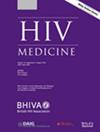Early HIV viral suppression associated with subsequent 12-month treatment success among people living with HIV in South Africa
Abstract
Background
We analyzed the STREAM (Simplifying HIV TREAtment and Monitoring) study to determine risk factors associated with HIV viraemia and poor retention 18 months after initiation of antiretroviral therapy (ART).
Methods
The STREAM study was an open-label randomized controlled trial in Durban, South Africa, that enrolled 390 people living with HIV presenting for their first HIV viral load measurement ~6 months after ART initiation. We used modified Poisson regression with robust standard errors to describe associations between baseline characteristics and three HIV outcomes 18 months after ART initiation: HIV viraemia (>50 copies/mL), poor retention in HIV care, and a composite outcome of poor retention in care and/or HIV viraemia.
Results
Approximately 18 months after ART initiation, 45 (11.5%) participants were no longer retained in care and 43 (11.8%) had viraemia. People with CD4 counts <200 and those with viraemia 6 months after ART initiation were significantly more likely to have viraemia 18 months after ART initiation (adjusted relative risk [aRR] 4.0; 95% confidence interval [CI] 2.1–7.5 and aRR 5.5; 95% CI 3.3–9.0, respectively). People who did not disclose their HIV status and had viraemia after ART initiation were more likely to not be retained in care 12 months later (aRR 2.6; 95% CI 1.1–6.1 and aRR 2.2; 95% CI 1.0–4.8). People with a CD4 count <200 and those with viraemia were more likely to not achieve the composite outcome 18 months after ART initiation.
Conclusions
Viraemia after ART initiation was the strongest predictor of subsequent viraemia and poor care retention. Understanding early indicators can help target our interventions to better engage people who may be more likely to experience persistent viraemia or disengage from HIV care.

 求助内容:
求助内容: 应助结果提醒方式:
应助结果提醒方式:


